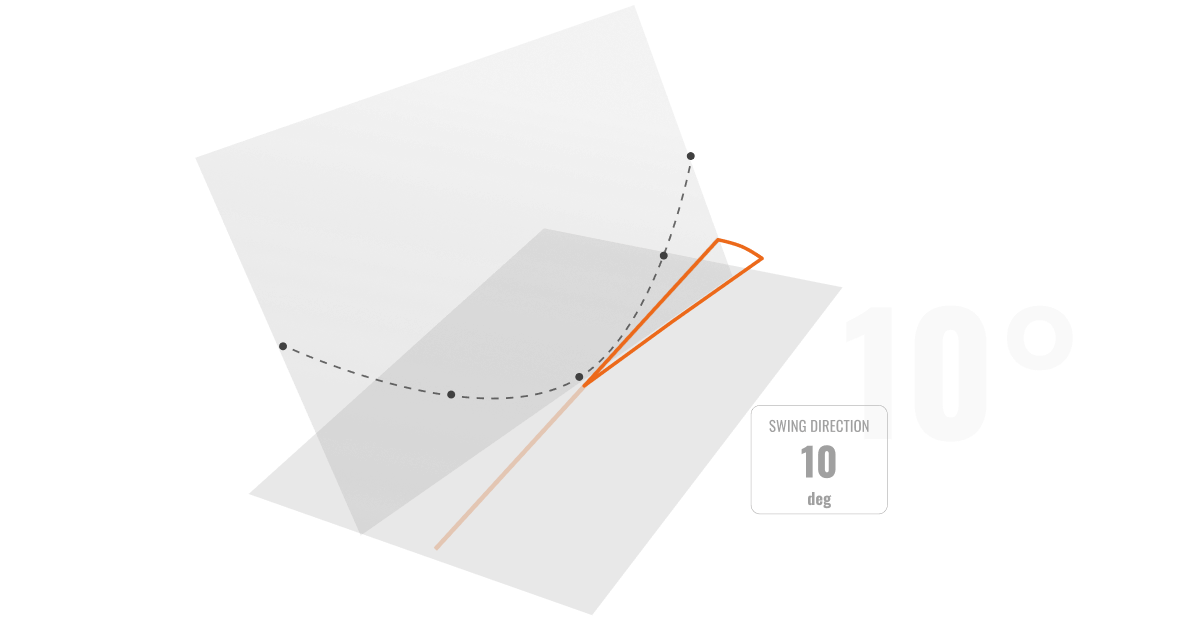What is Swing Direction?


Swing Direction uses hundreds of points from the club head during the downswing to help describe a golfer’s swing
When a swing is referred to as ‘over the top’, ‘underneath the plane’, or ‘on plane’, the person is generally referring to the Swing Direction.
Just as with swing plane, Swing Direction uses the three-dimensional position of the club head from approximately knee high to knee high on the downswing.
The overall motion of the club head on the downswing and post impact can be qualified to describe a golfer’s swing. This generalization of the swing is often the same as the measured Swing Direction. It is important to understand that Swing Direction is not the same as club path.
Club path represents the motion of the club head at one point in time (impact); whereas Swing Direction uses hundreds of points from the club head during the half-circle arc from knee high to knee high in the downswing.
For a right-handed golfer, a negative Swing Direction would be regarded as ‘over the top’, a positive Swing Direction would be regarded as ‘underneath the plane’, and a zero Swing Direction would be considered ‘on plane’ by most instructors.
To learn more, enjoy Martin Chuck of Revolution Golf explaining Swing Direction in this video.
Technical Definition:
Swing Direction – The horizontal direction of the plane relative to the target line defined by the club head’s center of gravity movement prior to impacting the golf ball.
Remark: Trackman uses the club head’s position data from both before and after impact to establish the SWING DIRECTION. Typically, the position data consists of a range from 2½ feet (75cm) before impact and 2½ feet (75 cm) after impact. Trackman’s sample rate is approximately 20,000 Hz.
Read what our Trackman University Masters say about Swing Direction…
“I use Swing Direction enormously when working with players who are developing and improving their kinematic sequence. Starting the downswing with the pelvis before the thorax is vital. However, for most golfers this sequencing initially causes the Swing Direction to become negative. For me, this parameter gives me the information to make necessary adjustments while maintaining an improved kinetic chain.”

Chris Brook
PGA International Golf Coach, UK
“I look at Swing Direction when I am looking at club path and attack angle. I want to get a clear picture of the general direction of the swing, where the student is hitting the ball in relation to the bottom of the arc, and how it all comes together to give us the path the club is taking at impact.”

Mark Anderson
Philadelphia Cricket Club, PA, US
“Understanding how the Swing Direction must change in accordance with the attack angle and swing plane to produce consistent, accurate ball flight has become one of the key fundamentals in modern day golf instruction. For example, to be capable of hitting arrow straight iron shots I am looking for a Swing Direction of around -2.5 degrees.”

John Parkinson
Donau Golf Club, Germany